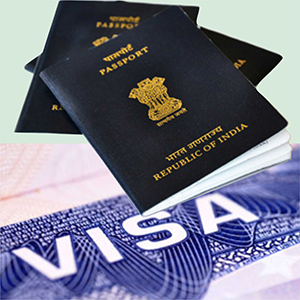Beijing, Dec 20: In a setback to Indian travellers, the Hong Kong, a special administrative region of China, has withdrawn the visa-free facility for Indians and they will now have to complete a pre-arrival registration from January.
"The Pre-arrival Registration for Indian Nationals will be implemented on January 23, 2017. The online service for 'Pre-arrival Registration for Indian Nationals' is now opened," the Hong Kong immigration department said in an announcement on its official website.
"Indian nationals must apply for and successfully complete pre-arrival registration online before they can visit or transit the HKSAR visa-free (if seeking to enter the HKSAR during transit). Pre-arrival registration is not required for Indian nationals in direct transit by air and not leaving the airport transit area," it said.
This is a major set back for over half a million Indians who visit the former British colony for business, trade and holidays. Till now Hong Kong, which is now a Special Administrative Region of China, has permitted Indians to enter with valid passport for a period up to 14 days without a visa. But the facility has been withdrawn despite representations from India ostensibly on the ground that the number of Indian asylum seekers was on the rise, official sources told PTI here.
Indian officials say that Hong Kong is using the asylum seekers as pretext to deny the visa free entry to Indians who are one of the largest spenders contributing the local economy. There is also concern whether the move is being brought about by Hong Kong due to pressure from China.
India has offered to actively take Indians back but the Hong Kong went ahead with the decision, Indian officials said.
It is unfair to even for Hong Kong's own interest to deny visa free entry for over half million Indians with legal papers to visit every year pointing to few hundred asylum seekers as it would cause loss of revenue, officials said.
Those who want to take advantage of the Hong Kong's liberal asylum procedures could still enter it by complying with the new registration system, they said.
China is yet to react to the new rule by Hong Kong.
Hong Kong's Immigration department assistant director Ma Chi-ming has been quoted by South China Morning Post as saying that Indian visitors should not enter fake data to try to enhance their chance of entering Hong Kong to seek economic asylum as they would bear legal consequences. Ma, in-charge of visas and policies, said the measure would be reviewed soon after its launch and considered a pilot scheme.
"We picked India as a testing point as it was one of the major source countries," he said. "We do not rule out extending the scheme to other countries in the future." Among the current backlog of 10,335 refugee applications in the city, 80 per cent are claimants from India, Pakistan, Vietnam, Bangladesh and Indonesia, he said.
Except for India, other countries nationals including those from Pakistan needed visas to enter Hong Kong. Indian officials say that Hong Kong has become attractive destination for asylum seekers from the sub-continent as it offered facilities for food and stay free of cost until the asylum requests are processed.
India has offered to actively take Indians back but the Hong Kong went ahead with the decision, Indian officials said. It is unfair to even for Hong Kong's own interest to deny visa free entry for over half million Indians with legal papers to visit every year pointing to few hundred asylum seekers as it would cause loss of revenue, officials said.
Those who want to take advantage of the Hong Kong's liberal asylum procedures could still enter it by complying with the new registration system, they said. China is yet to react to the new rule by Hong Kong.





Comments
Add new comment